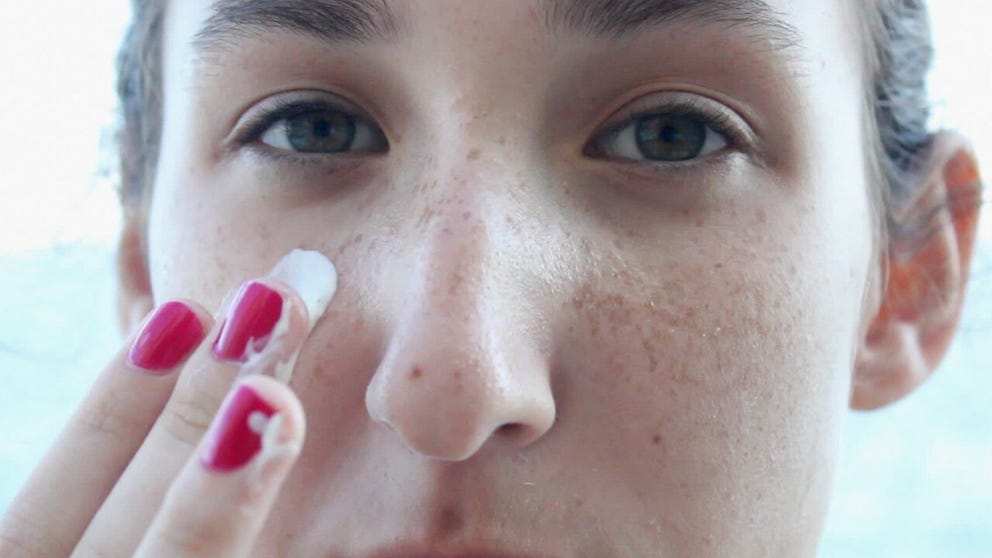7 things to know about sunscreen
Wearing sunscreen can do more than prevent you from looking like a tomato
7 things to know about sunscreen
Sunscreen can protect your skin from irreversible damage from the sun. Learn more about how sunscreen can protect you and your family.
Warmer weather means people start spending more time outdoors, but the sun can damage your skin even on cold days. Sunscreen is your best defense against damage to your skin from the sun's UV rays.
Here are seven things you should know about sunscreen.
1. Sunscreen can protect skin from irreversible damage from the sun
The sun emits the full spectrum of ultraviolet (UV) radiation, which includes UVA, UVB, and UVC rays. UVC rays don’t hit the Earth’s surface, but UVA and UVB rays certainly do and they are ones responsible for damaging skin cells.
UVA rays can penetrate and damage a deeper layer of the skin, which results in tanning and premature aging (so, they could be thought of as "UV-Age" rays). UVB rays harm the top layer of the skin, which results in sunburn (so, they could be thought of as "UV-Burn" rays). UVB rays also directly damage the DNA in skin cells, causing most types of skin cancers.
2. SPF only measures the amount of UVB rays a sunscreen can block
A sunscreen’s SPF, or "sun protection factor", estimates how much UVB exposure would cause a sunburn. Technically speaking, a sunscreen with SPF 15 would cause the skin to take 15 times longer to burn than skin without sunscreen. In reality, that technical measurement is not always applicable, as sunscreens of all SPF numbers usually wear off and need to be reapplied every two hours.
Additionally, sunscreen with higher SPF numbers only provides minimally greater protection. Sunscreens with SPF 15 block about 93% of UVB rays that reach the skin, whereas SPF 30 sunscreens block an estimated 97% of UVB rays.
3. Broad-spectrum sunscreen can block both UVB and UVA rays
Broad-spectrum protection is a relatively new feature of sunscreens, as most traditionally only blocked UVB rays. Now, sunscreens protect against a broader swath of the UV spectrum, including UVA rays.
If a sunscreen’s label features both "SPF" and "broad spectrum", then the amount of protection it provides for UVB and UVA rays is proportional. This means that the higher the SPF on a broad-spectrum sunscreen, the higher the protection against both types of radiation. (Using sunscreen with broad-spectrum protection is key, as UVA rays account for up to 95% of the UV rays that hit the Earth’s surface.)
4. Sunscreen should be used year-round, even when it’s cloudy outside
Even though ultraviolet radiation is most intense during spring and summer, sun damage can still happen during fall and winter. Overcast autumn days still have UV rays breaking through the clouds and making skin susceptible to sun damage. In areas with snowfall, sunlight can reflect off of snowy surfaces and increase skin’s exposure to harmful UV rays.
Geography can also play a role in increasing one’s exposure to UV light. People living at high elevations are physically closer to the sun and have less atmosphere to absorb UV rays. In fact, for every 1,000-meter increase in altitude, there is an estimated 10% increase in UV levels. This environment’s particular exposure makes wearing sunscreen a greater necessity throughout the year.
5. Sunscreens can provide two types of protection: chemical and physical
The way sunscreens block UV rays depends on their active ingredients.
Chemical sunscreens protect the skin by absorbing UV rays, and they may contain aminobenzoic acid, octisalate, octocrylene, avobenzene, or oxybenzone. Oxybenzone in chemical sunscreens has caused some concern as the chemical has been shown to be a hormone disruptor in some experiments; however, the evidence is currently inconclusive.
Physical sunscreens deflect UV rays, and they may contain zinc oxide and/or titanium dioxide. Because of their particular formula, physical sunscreens may not fully absorb into the skin, leaving the appearance of a "white cast". This is most apparent on people with darker skin tones.
6. There is no such thing as waterproof sunscreen
For years, sunscreen manufacturers slapped the words "waterproof" and "sweatproof" on their labels. But in the summer of 2011, the Food and Drug Administration put an end to such advertising, claiming that they were exaggerated.
Some sunscreen products today are dubbed "water-resistant", meaning that they remain effective in the water for 40 minutes. Sunscreens that are called "very water-resistant" provide protection for twice that long in the water.
Still, it is important to reapply sunscreen, especially after toweling off.
7. For fuller sun protection, pair sunscreen with other types of sun protection
While sunscreen alone can block most UV rays, other methods are good to keep in mind to prevent damage from the sun:
- Limiting time spent outdoors without sun protection.
- Finding shade and shelter during peak sunshine hours between 10 a.m. and 4 p.m.
- Wearing a hat and sunglasses
It’s also worth wearing protective clothing, particularly those made with densely-woven fabric (e.g. denim). Some companies have even begun producing sun-protective clothing with a measurement system called "UPF", or "ultraviolet protection factor". Much like SPF, UPF measures the amount of UV rays a piece of clothing can block. For instance, a shirt with UPF 50 can block 98% of the sun’s rays.
